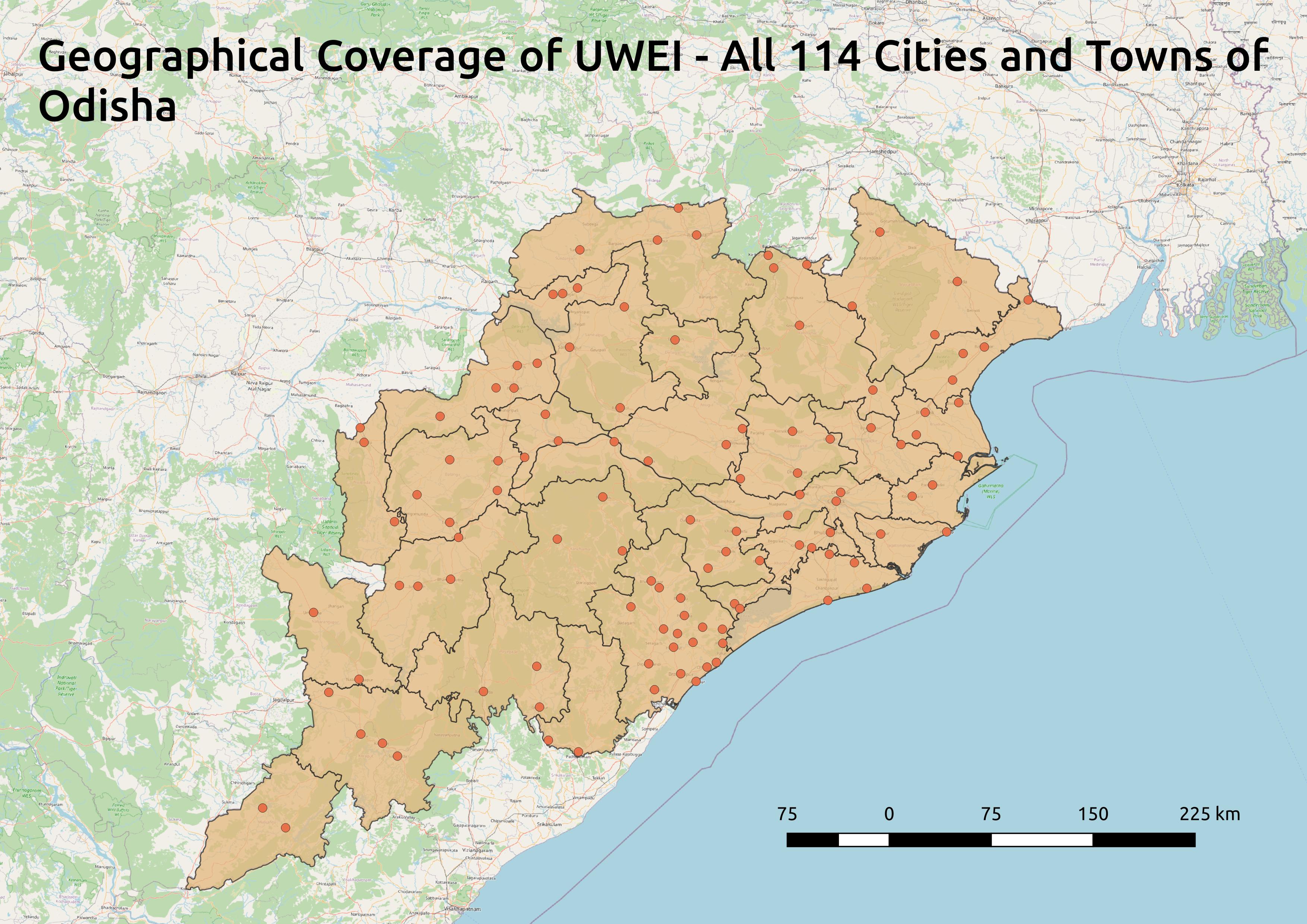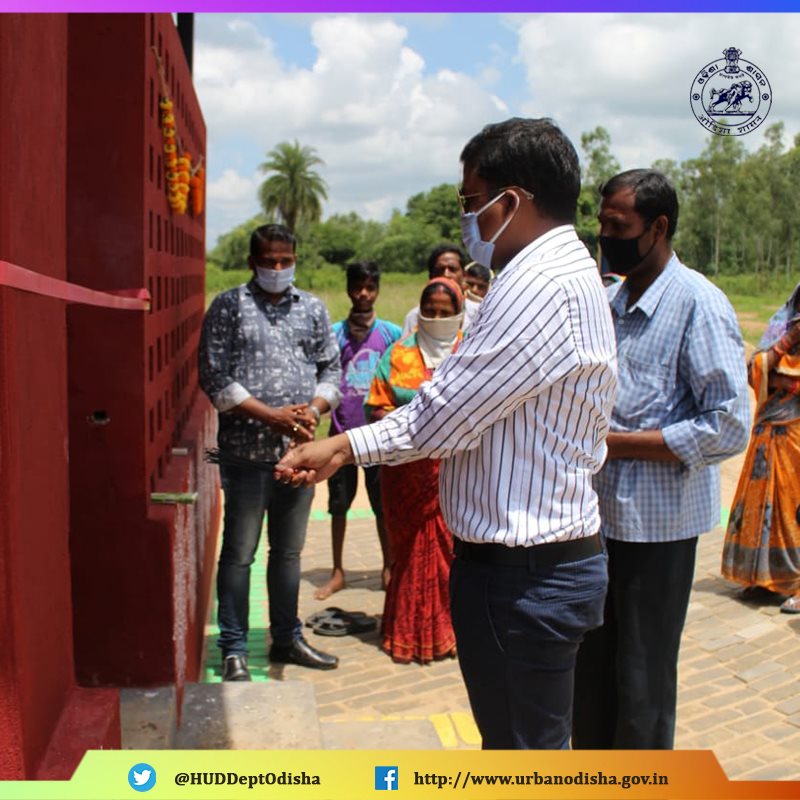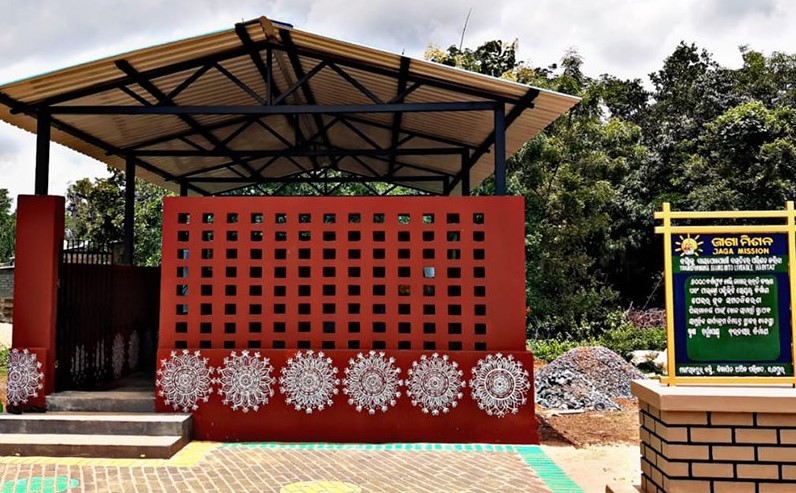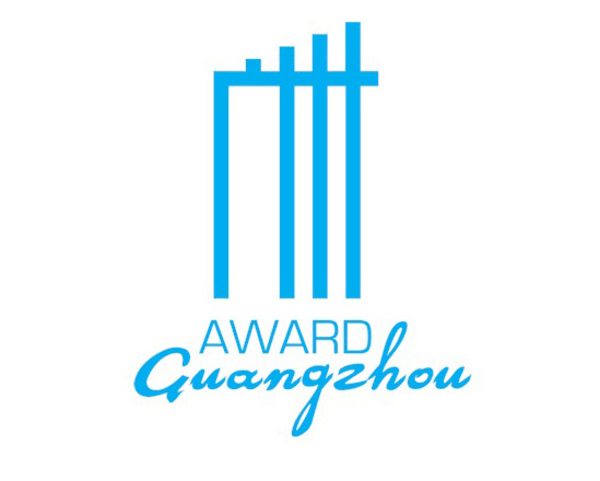 Map: geographical coverage of UWEI - © Government of Odisha, Department of Housing and Urban Development
Map: geographical coverage of UWEI - © Government of Odisha, Department of Housing and Urban Development Inauguration of UWEI community centre - © Government of Odisha, Department of Housing and Urban Development
Inauguration of UWEI community centre - © Government of Odisha, Department of Housing and Urban Development UWEI team in front of the community centre - © Government of Odisha, Department of Housing and Urban Development
UWEI team in front of the community centre - © Government of Odisha, Department of Housing and Urban Development UWEI Community Center constructed - © Government of Odisha, Department of Housing and Urban Development
UWEI Community Center constructed - © Government of Odisha, Department of Housing and Urban Development
City
Odisha
Main actors
Regional Government, NGO / Philanthropy, Community / Citizen Group
Project area
Metropolitan Area
Duration
Ongoing since 2020
Reducing vulnerabilities and improving opportunities of the urban poor.
The Urban Wage Employment Initiative (UWEI) has been created in response to the sudden and overwhelming unemployment crisis of the urban poor, due to nationwide lockdowns initiated across India to contain the Covid-19 pandemic. Hundreds of thousands of urban poor were rendered jobless within days and other scores of unemployed workers are returning to their hometowns through distress migration.
UWEI aims to provide immediate job opportunities to the urban poor through the execution of labour-intensive public works activities. While its primary aim is to respond to this emergency, it also aims to strengthen community institutions, ecological resilience and apply innovative technology to improve the overall sustainability of public welfare schemes and measures.
Guangzhou Award
This project was shortlisted for the 'Guangzhou Award' in 2020.
In India, the Covid-19 pandemic quickly turned from a public health challenge to include a major economic crisis for the urban poor and informal labour market. According to the World Bank, 40 million internal migrants were impacted by the nationwide lockdown, which commenced on March 24, 2020. Within weeks the Housing & Urban Development Department of the Government of Odisha (H&UDD) responded by announcing the Urban Wage Employment Initiative.
UWEI drew on resources and innovative technology already used in H&UDD schemes for the urban poor. For example, high-resolution geo-databases of 2000 slums created under JAGA Mission (a scheme aimed at upgrading slums across the state) were used for targeting UWEI activities. As Odisha is situated in a cyclone prone zone, some employment activities were directed at monsoon preparedness as well, thus enhancing ecological resilience too.
The initiative was decreed through Government Orders passed by the H&UDD, based on the provision of existing welfare schemes and legislation for the urban poor.
Objective:
The UWEI aims to secure the livelihoods of the urban poor, who face severe economic vulnerabilities during the Covid-19 pandemic.
Under UWEI, works will be identified in Urban Local Bodies (ULBs) that provide temporary employment for the urban poor and simultaneously support monsoon-preparedness and creation of public asset and maintenance in ULBs.
Odisha receives high intensity rainfall for a short spell and the idea is to conserve rainwater, prevent flooding and beautify urban areas in the state. In order to retain rainwater, water harvesting structures are to be constructed that will minimize runoffs through storm water drains. The conserved water will then be used to recharge ground water sources like natural ponds and reservoirs. Added to that, de-silting and repair of storm water drains will be carried out to redirect maximum quantum of runoff water without causing localized flooding. Similarly, efforts will be taken to increase green cover by plantation drives in public lands, roadside, parks, near banks of rivers/water bodies.
For all of these activities, jobseekers will be identified and provided employment opportunities based on their skills. Specific activities to be carried out are as follows:
1. Storm Water Drainage: Solid refuse passing into drainage reduces runoff capacity as well as has environmental impacts downstream, increasing the frequency of flooding in cities.
Activities to be undertaken:
(a) Pre – monsoon de-silting of drains, removal of silt and deposits in low-lying areas.
(b) Installing steel grills/screen/mesh at the confluence/outfall points of the drainage channels to filter out solid waste.
(c) Ensuring drains with covers without any gaps to avoid accidents.
2. Rainwater Harvesting: There is a need for systematic rainwater harvesting to minimize runoff and recharge ground water in cities.
Activities to be undertaken:
(a) Construction of rainwater harvesting structures/percolation tanks in public premises, parks, playgrounds, and other locations as the ULBs may deem appropriate.
(b) Development of new water bodies, public parks/playgrounds based on local needs and availability of vacant government lands either in the books of ULBs/Development/Planning Authorities or any other Government Department/Agency with due approval of District Collectors concerned without transferring/alienating the land. Water bodies, parks and playgrounds would be designed as public spaces, where additional features like walking tracks, street furniture, and arrangements for lighting, drinking water, toilets, garbage bins and adequate greenery would be planned. No machinery will be used for digging the new water bodies.
(c) Manual clearing of water hyacinths in existing ponds.
3. Increase in green cover and beautification: Monsoons are conducive for increasing the green cover due to availability of plenty of water.
Activities to be undertaken:
(a) Plantations to be done at medians, road dividers, parks, open spaces, near water bodies etc. Nurseries of the Forest Department & other Government agencies may be leveraged for sourcing plants and seedlings.
4. Sanitation Activities to be undertaken:
(a) Clearance of construction and demolition (C&D) waste and processing through SHGs for recycling and reuse.
(b) Construction of public urinals at high footfall zones.
5. Community centres & Open Space development:
Creation of workspace and space-based development are necessary for revitalizing neighbourhoods and retaining the socio-cultural character of a city/town. It eventually leads to an inclusive, engaged and healthy community.
Activities to be undertaken:
(a) Construction of micro community centers or Self Help Group (SHG) work centers in every ward to provide built up space/open space for community & SHG activities. ULBs could plan for one such center in each ward. The micro community center will be maintained by SHGs.
(b) Specifically, in slum settlements, construction of micro community centers or SHG work centers and development of open space that will serve as children’s’ play area and also benefit the community as a whole.
(c) Involve local artisans to beautify the city through wall paintings and murals. This will also generate employment opportunities for painter, artist living in communities. Time Period:
Implementation guidelines:
(1) List of projects shall be identified by ULBs ward-wise from the above categories/activities.
(2) ULBs will carry out appropriate IEC (information, education and communication) measures to create awareness at the ULB level on the job-opportunities, enrolment procedures and benefits.
(3) Community based organizations such as SHGs and their Area Level Federations, City Level Federations and Slum Dwellers Associations (SDAs) would be the engaged in implementing the work as implementation partners.
(4) Work-Orders will be directly issued to engineers without need for a tendering process. Engineers will therefore provide the required plans, estimates and technical supervision to all community level partners.
(5) Additionally, engineers will document all work-related procedures -ward level record of people engaged activity-wise and date-wise, before and after situations (with photographs and geo-location) for verification by appropriate authorities.
(6) Material procurement will be done by ULBs and implementing partners will not have any role in it.
(7) Payment shall be transferred through Direct Benefit Transfer mode to beneficiary bank accounts on a weekly frequency.
(8) All information, relating to work undertaken, number of beneficiaries and financials would be placed in public domain.
(9) Technology based solutions including mobile app will be developed for geo-tagging the works, performance monitoring and for enhancing transparency and accountability in the implementation.
(10) ULBs shall ensure that social distancing is maintained, ensure there are no gatherings, basic worksite facilities – availability of clean drinking water, support for child-care, use of masks as well as sanitizers and other required facilities may be factored into the process.
The UWEI combine its own resources and funds with those of large on-going welfare schemes of H&UDD to create its unique model of quick response at a large level.
Smart technology resources, such as high-resolution geo-databases are combined with grass-root level community organisation to leverage these existing resources and optimise expenditure.
The initiative aimed to achieve an increase in green space, and the sustainable development and maintenance of public assets.
UWEI not only provides rapid relief to reduce livelihood vulnerabilities of the urban poor in Odisha, but also to migrant workers stranded in the state due to the pandemic and also the migrant workers returning to the state due to distress in-migration from surrounding regions.
UWEI has generated more than 1 million days of work in the first 6 months of its implementation. In the next phase of its implementation, it is expected to directly benefit many urban poor, slum dwellers and informal workers.
Absence of information about the labour force who were eligible to enrol in the programme made it challenging for local agencies, self-help groups (SHGs) and slum development agencies (SDAs) to hire right resources and match jobs with the skills. Furthermore, beneficiaries were to be paid weekly by Direct Benefit Transfer, however, most people did not have bank accounts that the funds could be transferred to. The community organisers played a key role in mitigating these challenges by creating a robust database of migrants, mapping people’s skills with the jobs available and organizing transport to banks for people to open accounts.
UWEI is both evolutionary and revolutionary due to reasons given below:
Success factors:
- Combination of labour-intensive and high-technology measures
- Converging itself with resources produced under other on-going welfare schemes
- Strengthening community organisations by removing middle-men and directly involving the community in planning and execution.
Measures taken to sustain innovation over time:
- Combination of labour intensive and highly specialised technology
- Serious involvement and accountability of community groups
- Convergence and integration with other on-going development and welfare scheme
Transferability
The experience of Odisha with UWEI has already been shared by the Ministry of Housing and Urban Affairs with other states, so that they can develop measures to address similar crises affecting the urban poor in their own cities and towns.
Guangzhou Award application form
On Map
The Map will be displayed after accepting cookie policy
